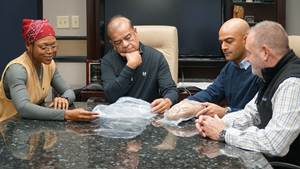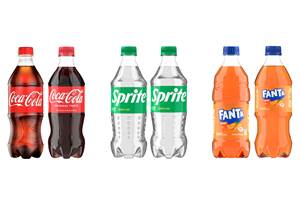Wood on Plastics: Buckle Your Chinstraps in Packaging
Future trends in packaging markets may not feel quite as volatile as a ride in the stock market, but things are still going to get hectic for packaging processors.
In the near term, the overall outlook for plastics packaging in the U.S. is pretty good. The U.S. economy is slowly recovering, and consumer spending is poised to grow steadily in the coming quarters. This forecast is predicated upon continued improvement in the monthly employment data, and on the expectation that there will be no significant disruptions to the flow of oil out of the Middle East. If these conditions hold, then packaging demand in 2011 will be stronger than it was in 2010, and 2012 will be better than 2011. In overall GDP (Gross Domestic Product), U.S., inflation-adjusted growth will be more than 3% this year and better than 4% next year.
Even if this rather optimistic scenario comes to pass, there are a number of longer-term trends emerging that will roil the packaging sector in the coming months and years. Future trends in packaging markets may not feel quite as volatile as a ride in the stock market, but things are still going to get hectic for packaging processors. For those who are prepared, there will be many opportunities for growth and profit. For those who are not…well you can always hope for the best.
The first trend is the high cost of resin. The recovery of the U.S. economy is far from robust, yet prices of resins, which correlate strongly with that of crude oil, are approaching record levels. And while there is reason to believe that oil prices will moderate when and if the political situation in the Middle East stabilizes, increasing global demand for plastics products will keep resin prices from falling very far.
The prices for almost every kind of food product are also moving up. The burgeoning middle classes in developing countries like China, India, and Brazil are consuming more food, so the global prices for commodities such as sugar, coffee, corn, rice, soybeans, and all kinds of meat products are in a long-term uptrend. These rising prices will ultimately alter the consumption patterns of the U.S. markets and they will also have an effect on the margins of food and packaging processors.
And if these rapid changes in materials prices and global consumption patterns are not enough of a shake-up for plastics processors, then add the movements towards increased recycling, biodegradability, and other forms of sustainability. For many U.S. households, their consumption of plastics packaging represents the front line in the battle to go “green.” But it goes even deeper.
As all of these factors converge, packaging designers will be pressured to create products that consume less material and are more efficient to transport, handle, and store without offending customer sensibilities. And this means both pre- and post-consumer sensibilities. How many containers will fit on a pallet? How much does the pallet weigh? How high can the pallets be stacked? How easy is this container to recycle? These are the kinds of questions packaging processors will be faced with. All while working to create a package that entices the consumer to make the purchase.
WHAT THIS MEANS TO YOU
•Bigger isn’t necessarily better. Compared with previous generations, today’s consumers tend to carry less inventory of food and household products. Design and process accordingly.
•Innovation, creativity, and vision will all be necessary in abundance, if you want to play in the packaging sector.
•Be prepared to be called on to develop procedures to recover packaging materials after the consumer is finished using them.
•Look for opportunities that represent substantive change rather than chasing a fad. Packaging products made from recycled materials are increasingly likely to gain a marketing advantage, but these gains will be sporadic at first.
Related Content
For Extrusion and Injection-Blow Molders, Numerous Upgrades in Machines and Services
Uniloy is revising its machinery lines across the board and strengthening after-sales services in tooling maintenance, spare parts and tech service.
Read MoreBreaking the Barrier: An Emerging Force in 9-Layer Film Packaging
Hamilton Plastics taps into its 30-plus years of know-how in high-barrier films by bringing novel, custom-engineered, nine-layer structures resulting from the investment in two new lines.
Read MoreMultilayer Solutions to Challenges in Blow Molding with PCR
For extrusion blow molders, challenges of price and availability of postconsumer recycled resins can be addressed with a variety of multilayer technologies, which also offer solutions to issues with color, processability, mechanical properties and chemical migration in PCR materials.
Read MoreCoca-Cola’s Redesign of Small PET Bottles Pushes Lightweighting Below Prior ‘Floor’
Coca-Cola thought it had reached the limits of lightweighting for its small PET carbonated soft drink bottles. But a “complete redesign” led to a further 12% reduction.
Read MoreRead Next
People 4.0 – How to Get Buy-In from Your Staff for Industry 4.0 Systems
Implementing a production monitoring system as the foundation of a ‘smart factory’ is about integrating people with new technology as much as it is about integrating machines and computers. Here are tips from a company that has gone through the process.
Read MoreLead the Conversation, Change the Conversation
Coverage of single-use plastics can be both misleading and demoralizing. Here are 10 tips for changing the perception of the plastics industry at your company and in your community.
Read MoreFor PLASTICS' CEO Seaholm, NPE to Shine Light on Sustainability Successes
With advocacy, communication and sustainability as three main pillars, Seaholm leads a trade association to NPE that ‘is more active today than we have ever been.’
Read More










